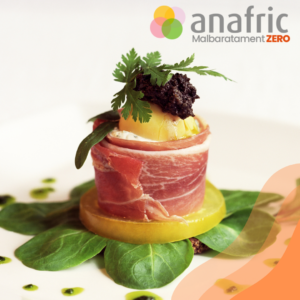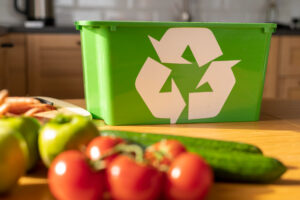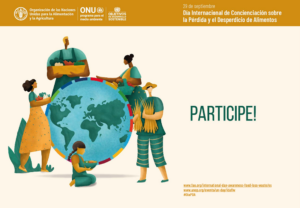Sustainability in a restaurant is, nowadays, the first thing we have to take into account. The zero-emissions law requires us to have a plan in place... but first we will have to analyze our restaurant and see how I will apply it, where and in what way.
Therefore, we will explain to you in a simple way how to focus our efforts, so that it is not so complicated to be able to have a plan in the shortest possible time.
First of all we have to ask ourselves a series of questions:
1.- Analitzem els nostres menús. Què ens demana més la gent i què sobra de cada menús (📍apunteu-lo)
2.- What are the portions of each menu. What percentage is left over from each menu?
3.- Do you offer your customers to take home their leftovers?
4.- Very important: you must control what you have in your warehouse and dispose of it by expiry.
5.- 5.- And if we ask our parents or grandmothers what they did to reduce the use of food that went straight to the trash.
6.- Heu informat al vostre personal sobre el malbaratament i quines accions han de fer per evitar-ho?
7.-You have contacted associations to establish agreements and give away leftover menus or food
8.- Consider communicating everything you do so that your customers are up to date with your initiatives
Si els 8 punts anteriors els tenim clars, podem començar a plasmar el nostre pla de malbaratament alimentari.
For example, a good starting point could be this description of my catering services:
- Esmorzars:
- Entrepans: 140 unitats/dia
- Brioxeria: 90 unitats/dia
- Dinars:
- Menús complets (primer plat, segon plat i postres): 135 menús/dia
- Mitjos menús (plat únic i postres): 60 mitjos menús/dia
- Sopars:
- A la carta (plats individuals): 100 comensals/dia
Once we have defined what we serve every day, we have to weigh each unit. For example, and following the model of the Waste Guide for Restaurants of the Generalitat de Catalunya
- Esmorzars:
- Entrepans: 160 grams/unitat. En multiplicar-ho per les 140 unitats/dia, això equival a 22,4 kg/dia.
- Brioxeria: 75 grams/unitat. En multiplicar-ho per les 90 unitats/dia, això equival a 6,75 kg/dia.
- Dinars:
- Menús complets (primer plat 150 grams, segon plat 200 grams i postres 100 grams): 450 grams/menú.
En produir 135 menús/dia, s’estimen uns 60,75 kg/dia. - Mitjos menús (plat únic 150 grams i postres 100 grams): En produir 60 mitjos menús/dia, s’estimen uns 15 kg/dia.
- Menús complets (primer plat 150 grams, segon plat 200 grams i postres 100 grams): 450 grams/menú.
- Sopars:
- A la carta (plats individuals 150 grams): Prenent com a exemple 100 comensals diaris, prenent 2 plats i postre, ens dona 400 grams/comensal, es a dir 40 kg/dia.
- Bread on the table daily: 15 kg/day
Therefore, the total food used in our restaurant during a year would be:
📍Adding the daily kg produced in Breakfasts + Lunches + Dinners + Bread on the table daily, gives us a total sum of 159.9 kg produced daily.
📍Tenint en compte que es treballa uns 300 dies per any, multipliquem la xifra per 300, i tenim una xifra global de: 47.970 kg/any o 48 tones/any.
We already know how much food we use to make our meals at the restaurant. Now we need to know which ones to launch. And for that we will have to see, what we quantify as food that can be reused, those that cannot and those that, for example, we will donate to a social entity.
We will look at this section in detail in the next article.














